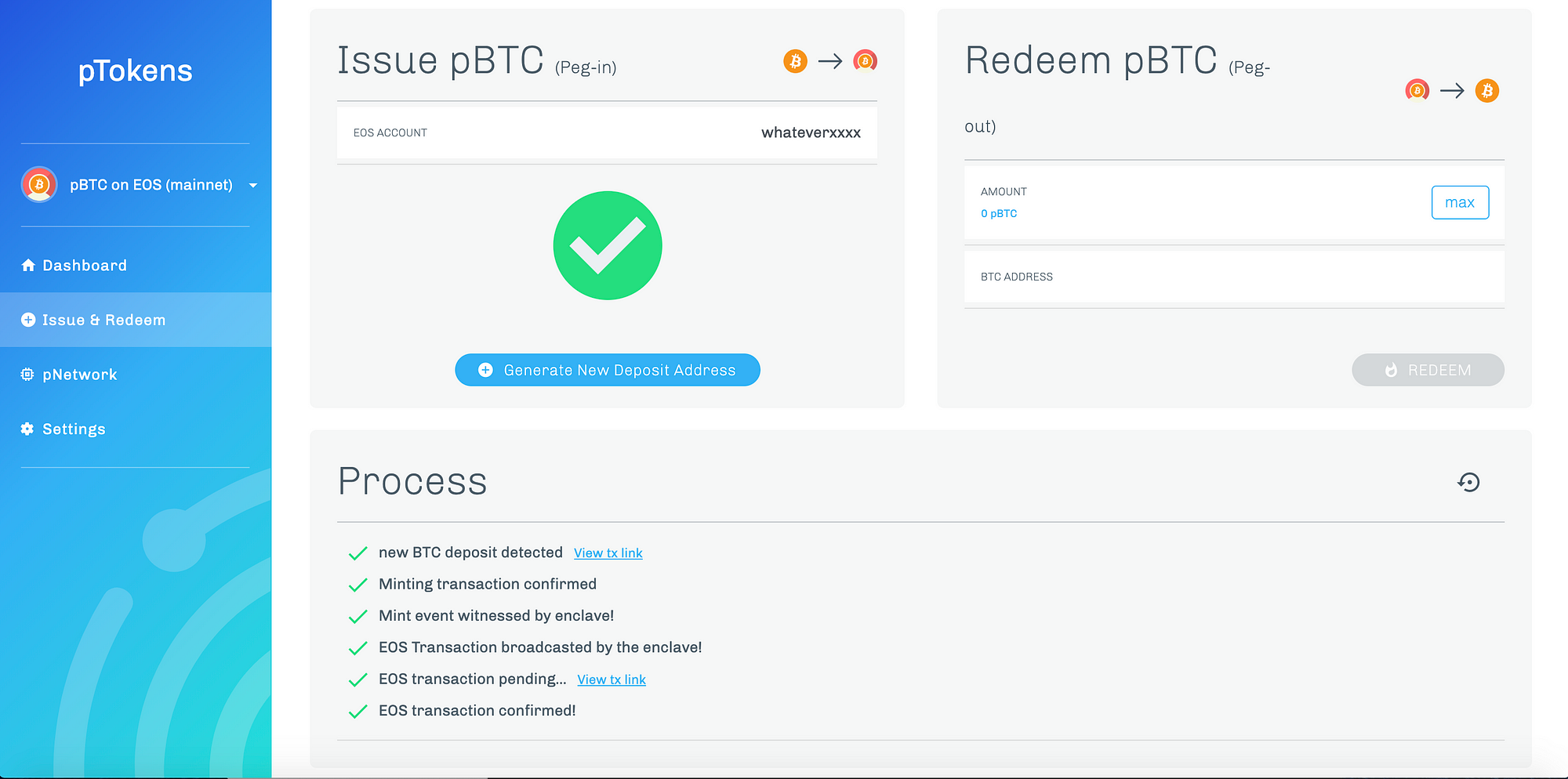[ad_1]

Provable Things, the company that developed pTokens, a technology for token and DeFi interoperability between blockchains, announces the introduction of pBTC in the main chain of EOS. Here’s how the news is described on his blog:
After the successful launch of pBTC in the Ethereum network, we have ours today Interoperability for EOS. It is the first Bitcoin to EOS bridge in the entire industry. pBTC is now EOS compliant so Bitcoin holders can use their BTC across the EOS ecosystem including all DApps.
This unique token is linked 1: 1 to Bitcoin, so users can easily mint their own pBTC and use it immediately with EOS DeFi platforms. With this peg-in system, you can deposit your BTC for safe storage without having to sell or exchange your Bitcoin. Then you can “discontinue” or redeem your BTC at any time by withdrawing the amount originally deposited.
Provable Things founder Thomas Bertani was quoted as saying that pTokens’ interoperability “is vital to the movement, since liquidity is the catalyst that helps DeFi realize its true potential.”
How that changes the game
EOS is a leading blockchain network with its native cryptocurrency among the top ten by market cap. The development team behind EOS has promised to completely eliminate transaction fees and achieve scalability that can process millions of transactions per second.
This focus on scalability has helped EOS to withstand the recent recessions in the industrial market. The blockchain “is not as sensitive to an increase in concurrent transactions due to its architectural features.” The current design can handle a bandwidth capacity of 250 transactions per second, which “can potentially be scaled to 4,000”.
EOS has a rapidly growing DeFi ecosystem and is on track to achieve its goal of hosting DApps on a commercial scale.
However, according to DeFi Prime, EOS is still trying to catch up with Ethereum’s most advanced DeFi ecosystem. There are 22 EOS projects compared to 209 from Ethereum.
EOS owners and developers benefit from the rapid development of the ecosystem, but continue to block the participation of non-EOS users. As a result, the liquidity is in the silo and there is a missed opportunity to experiment and grow the community.
Today’s decentralized applications have to work together and complement each other like Lego blocks so that the entire DeFi industry can be scaled. This is what pTokens achieves: an intuitive and scalable level of interoperability that allows liquidity to flow through different blockchains. This cross-chain liquidity will be the catalyst for the introduction of DeFi.
The merger of the EOS DeFi ecosystem with Bitcoin’s unmatched liquidity could create an inexhaustible source of decentralized funding.

What do DeFi DApps get?
PTokens help DApps to be assembled by tearing down the walls of their own blockchains. This maximizes their usability and accessibility as they welcome completely new blockchain communities with which they can explore and interact with the liquidity of the cryptocurrencies and tokens they brought with them.
Decentralized exchanges (DEX) generally have to integrate completely new blockchain systems to enable cross-chain conversions. PTokens combine centralized and decentralized worlds so that users can easily switch between different blockchain assets and create new opportunities for market makers.
Soon all types of digital assets in the form of pTokens will switch seamlessly from one blockchain to another. ETH holders can also explore the EOS blockchain and vice versa. The pTokens system provides an additional feature that allows pBTC to move between Ethereum and EOS blockchains, making the connection between these DeFi ecosystems even stronger.
It is this cross-chain compilation feature that enables DeFi to become a strong, diverse, and competitive ecosystem that competes with traditional funding.
How is it different from pBTC on Ethereum?
Due to the way each blockchain infrastructure works, Ethereum and EOS follow different token specifications.
The management of tokens in Ethereum is done via intelligent contracts. Likewise, tokens in EOS are based on the smart contract from eosio.token. With these intelligent EOS contracts, you can create your own token by providing a maximum offer, issuing tokens to an account and transferring tokens between accounts.
The EOS token itself is issued in the form of a token. Here you can see how EOS tokens are made.

Supported by Bitcoin
By making Bitcoin EOS compliant, we can also introduce Bitcoin as a security position for stable coins like EOSDT.
EOSDT by Equilibrium is a decentralized stable coin supported by EOS and linked to the US dollar. This leading DeFi project integrates the pTokens solution into EOSDT, the collateral value of which is approximately $ 10 million (primarily EOS-based DApps).

Given the current market downturns that lead to unprecedented events such as the MakerDAO debt auction, new solutions are needed to ensure stable collateral for digital assets.
EOSDT will soon update its single-collateral token model to a multiple-collateral version, which will continue to be supported by pBTC. This not only brings more liquidity, but also makes the collateral position much more stable as it is supported by EOS and BTC.
Alex Melikhov, CEO and founder of Equilibrium, said the team was “excited about the integration of pBTC as it creates more use cases for our users who can now take full advantage of their crypto wallet.” DeFi has been waiting for a reliable way to secure Bitcoin and has now become a reality. “
The main goal of Equilibrium is to provide a seamless user experience. Thanks to the comprehensive integration of the pTokens solution into the web interface, the provision of Bitcoin as security is as easy as sending just two blockchain transactions – one is the deposit of Bitcoin and the other is the redemption of EOSDT.
Here you can get the original contribution in English about Provable Things. Translated by Cryptocurrency.com
Join in telegram y Twitter;; You can also hear ours Podcast
[ad_2]

Add Comment